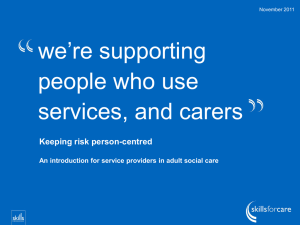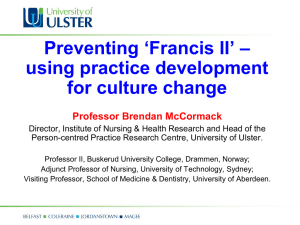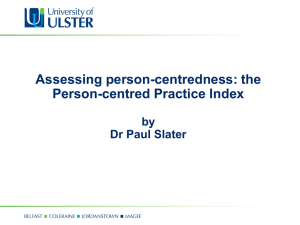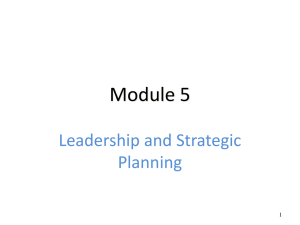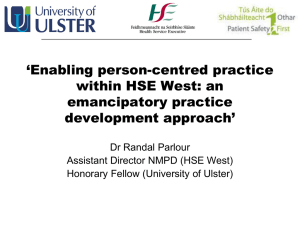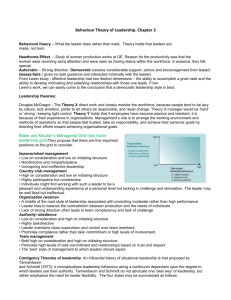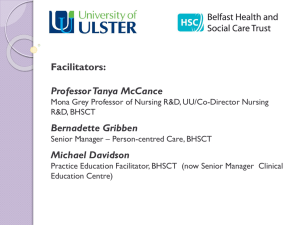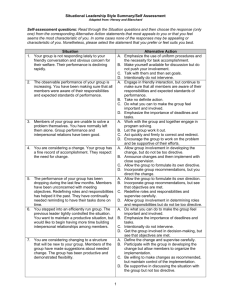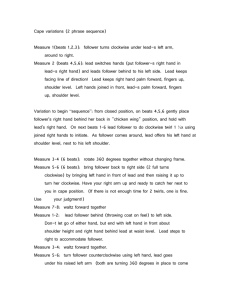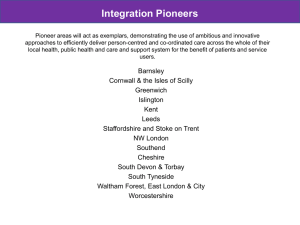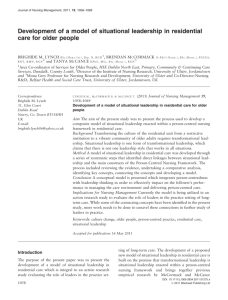Leadership developments in nursing home settings
advertisement
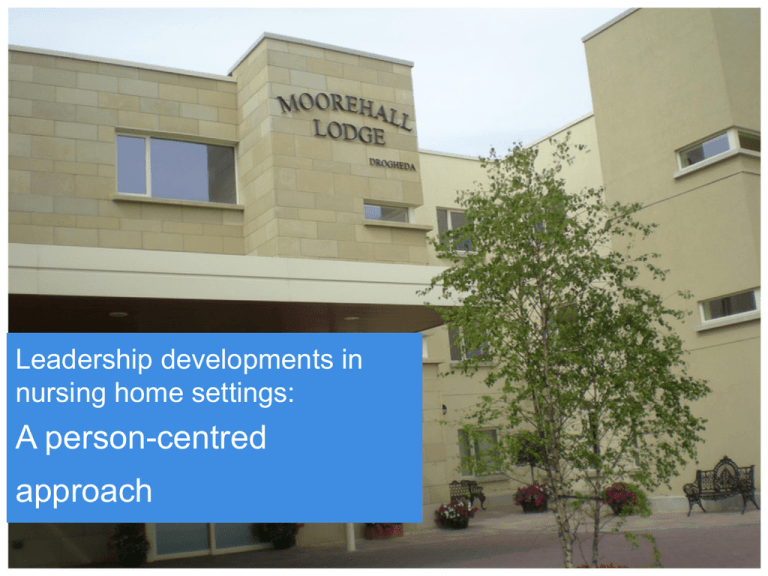
Leadership developments in nursing home settings: A person-centred approach Situational Leadership • Core skills of a Situational Leader are diagnosis, flexibility and partnering for performance • Not one style works in all situations • Four sets of leadership behaviours that result from combining high and low supporting behaviours (such as listening, providing feedback and encouraging) with high and low directing behaviours (‘task-related behaviours’ like demonstrating, instructing and monitoring) (Hersey & Blanchard, 1982) Person-centredness “An approach to practice established through the formation and fostering of therapeutic relationships between all care providers, older people and others significant to them in their lives. It is underpinned by values of respect for persons, individual right to self determination, mutual respect and understanding. It is enabled by cultures of empowerment that foster continuous approaches to practice development” (McCormack and McCance, 2010, p31) The Person-Centred Nursing Framework Comprises four constructs: 1. Prerequisites which focus on the attributes of the nurse 2. The care environment which focuses on the context in which care is delivered 3. Person-centred processes which focus on delivering care through a range of activities that operationalise person-centred nursing 4. Expected outcomes which are the results of effective person-centred nursing. (McCormack and McCance, 2006, 2010) Hypotheses Hypothesis 1 • A situational leader enables the follower to articulate the developmental level that makes it possible for them to function effectively in the care environment Hypothesis 2 • The development of the follower, brought about by the situational leader, enables the delivery of more effective person-centred care. Hypothesis 3 • Improvement in the follower’s delivery of person-centred care triggers a change in the leadership style of the situational leader. Methodology Study uses an action research approach The interrelated cycles of action research that involve planning, acting, observing and reflecting are shaped by the study’s three actionable hypotheses. Articulating the components of the Leadership Programme • • • • • Nature of WCCAT is that it starts creating spirals -general action cycles Pin-point where my ‘leadership intervention’ will take place – through - 1:1 facilitated critical reflection. coaching, individual workshops Moving from general observation sessions (looking at the leaders changing practice) to observing the individual leader (focusing on the leader’s behaviour) Based on the observations - identification of the key components that are derived from the S.L. framework which will be covered with the individual leaders At various points – reach Time 2 data –collect LPI’s and interviews to see what’s happening in all of the cycles and identify connections. Action Cycles • • • • Situational Leadership; Feedback from LPI questionnaire & Articulating own leadership style (both facilitator & leader) Observation of practice: - Residents’ dining experience; Getting up & settling down; daily social activities Follower articulates PCP & communicates main concepts of PCP to team Leader observes & and engages in critical dialogue with follower Action Cycles • • • Leader works on establishing quality of communication between follower, individual team members and overall team in general Re-evaluates/diagnoses follower’s developmental level and uses mainly directing/coaching style to improve communication Leader partners follower in her performance e.g. establishing House Values with the team Action Cycles • • • Leader decides with follower on a schedule of regular meetings where critical dialogue and reflection take place Leader embarks on self-directed learning to gain insight into more effective teamwork Monthly Team meetings are established in each House and these ‘feed’ into monthly Leadership meetings which in turn ‘feed’ into newly established Clinical governance meetings: cyclical process Components of Evolving Leadership Programme Establishing leadership meetings Establishing team meetings Building team cohesiveness Empowering the team Critical reflection Enhancing communication Critical dialogue Clarifying House values Partnering for performance Articulating PCP Articulating own leadership style Articulating own dev. level WCCAT Observations; LPI questionnaires; Interviews; Reflective field notes Data Analysis • • • Actual WCCAT observations, reflective field notes on leader interventions and map of cycles Feedback from the LPI Interview data analysed – framework linking it into action plans for improving the quality of care/practice and developing the person-centred framework (Hsu & McCormack, 2006) Data Analysis (continued) • Focus Group interview data analysed hermeneutic analysis/theme development & metaphor construction in order to derive overarching constructs that best represent the views of key stakeholder • Outcomes Framework (McCormack & McCance 2010) to capture the person-centred outcomes Thank you
